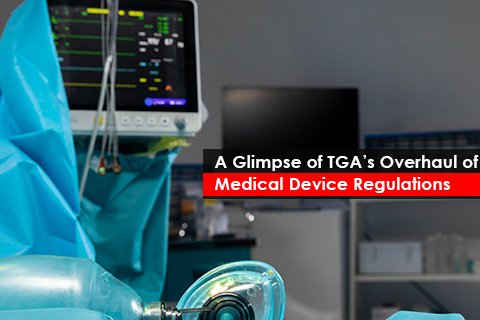Therapeutic Goods Administration (TGA), under the ‘Therapeutic Goods Act 1989,’ is entitled to regulate medical devices placed and marketed in Australia. Medical devices are regulated under the Therapeutic Goods (Medical Devices) Regulations, 2002. Initially introduced in 2002, the regulations underwent multiple amendments at a frequency of at least once a year, almost every year. Though these amendments introduced changes to accommodate the industry trends, a huge divide still exists between the industry and the regulations, triggering a major TGA medical device reform.
The main objective of the Australian medical device reforms is to enhance patient safety and to ensure that medical devices of higher quality, performance, and safety are available for patient access. In December 2020, the TGA came up with medical device reforms and had drafted an action plan. The TGA intends to strategically implement the reforms to tighten the Regulatory scrutiny at the following three (03) possible phases of a device life cycle:
·Strategy 1 - To improve how new devices get on the market
·Strategy 2 - To strengthen monitoring and following-up of devices already in use
·Strategy 3 – To provide more information to patients about the devices they use
Improving the Process of How New Devices Get on the Market
TGA has already implemented certain initiatives like Priority review pathway for medical devices, Alignment of medical device Regulatory framework with the European Union (EU), Comparable overseas regulators, etc. The other reforms related to the Australian Conformity Assessment Bodies (Australian CAB) are still in the developmental stage.
|
TGA Strategy 1 Initiatives |
Description |
|
Priority review pathway for medical devices |
To expedite the assessment of certain medical devices under priority review. |
|
Establishment of the Australian CAB |
Australian corporations can apply for the Australian CAB determination and issue conformity assessment certification for medical devices. |
|
Reviewing the regulation of low-risk products |
Appropriate regulation of low-risk devices to improve consumer safety, reduce Regulatory burden and improve Regulatory knowledge. |
|
Changes to the regulation of Personalized Medical Devices (PMD) |
A new framework was introduced to ensure the appropriate level of regulation of PMD to manage the risk these devices may pose. |
|
Reviewing the regulation of self-testing IVDs |
To ensure that all IVDs are subject to an appropriate level of premarket scrutiny prior to the supply in Australia. |
|
Changes to the regulation of IVD Companion diagnostics |
To harmonize with other jurisdictions to ensure that all IVDs are subject to premarket scrutiny prior to the supply in Australia. |
|
Changes to the regulation of medical device software |
To regulate software-based medical devices, including software that functions as a medical device in its own right. |
|
Reclassification of certain medical devices |
The TGA is reconsidering the current classification of devices where safety issues have been identified and/or the European Union has changed its classification systems.
Harmonization of the Australian classification rules safeguards patients to harmonize the requirements, facilitate the market's smooth operation, and ensure timely access to medical devices. |
|
Benchmarking against the International assessment timeframes |
The Review of Medicines and Medical Device Regulations identified that TGA's conformity assessment timeframes should be reviewed after benchmarking with comparable overseas regulators. |
|
Mutual Recognition Agreement (MRA) changes |
Between Australia and the European Community, provision for the mutual acceptance of conformity assessment for medical devices. |
|
Acceptance of comparable overseas Regulatory approvals in Australia |
Marketing approvals and certificates from comparable overseas regulators can be considered for TGA approvals and enable medical devices to be available for patients in Australia sooner. |
Strengthening Post-market Monitoring and Following-up of Devices in Use
The TGA has made reforms like the Establishment of a Unique Device Identification System, which will enable TGA to trace the medical device for clinical or Regulatory action if any issue with device safety is identified. A reform to enhance post-market monitoring is also released. A new overhaul called the reviews of devices of concern has been released for class III devices, requiring higher evidentiary requirements.
|
Reviews of Devices of Concern |
|
Establishment of a Unique Device Identification |
|
Enhancements to Post-market Monitoring |
|
|
|
|
|
|
|
|
|
|
|
Consumer Awareness About the Devices They Use
TGA intends to empower the consumer by providing more information to patients about the devices they use. TGA also is planning to establish an expert group with consumer representation.
The TGA has developed an exceptional action plan for the medical devices entering the Australian market with strong research and analysis. With these medical device reforms, the approval process in Australia has become more stringent and systematic that ensure complete patient safety. For more information on medical device reforms in Australia, consult a Regulatory expert like Freyr.
Stay informed. Stay compliant.





